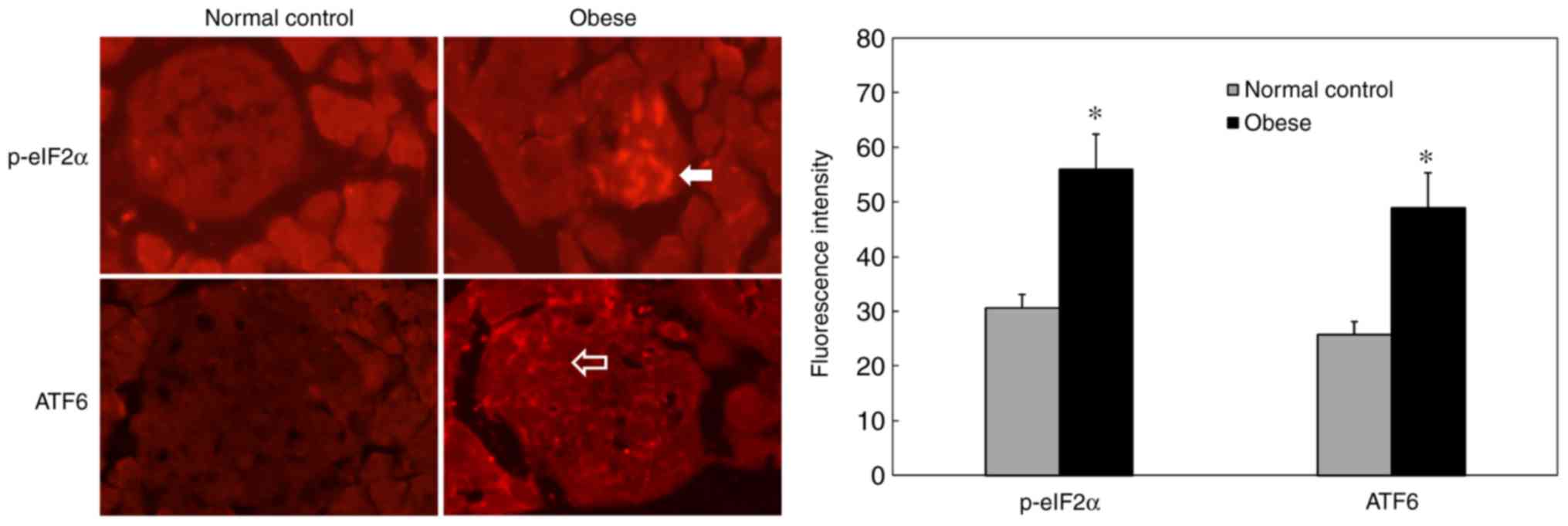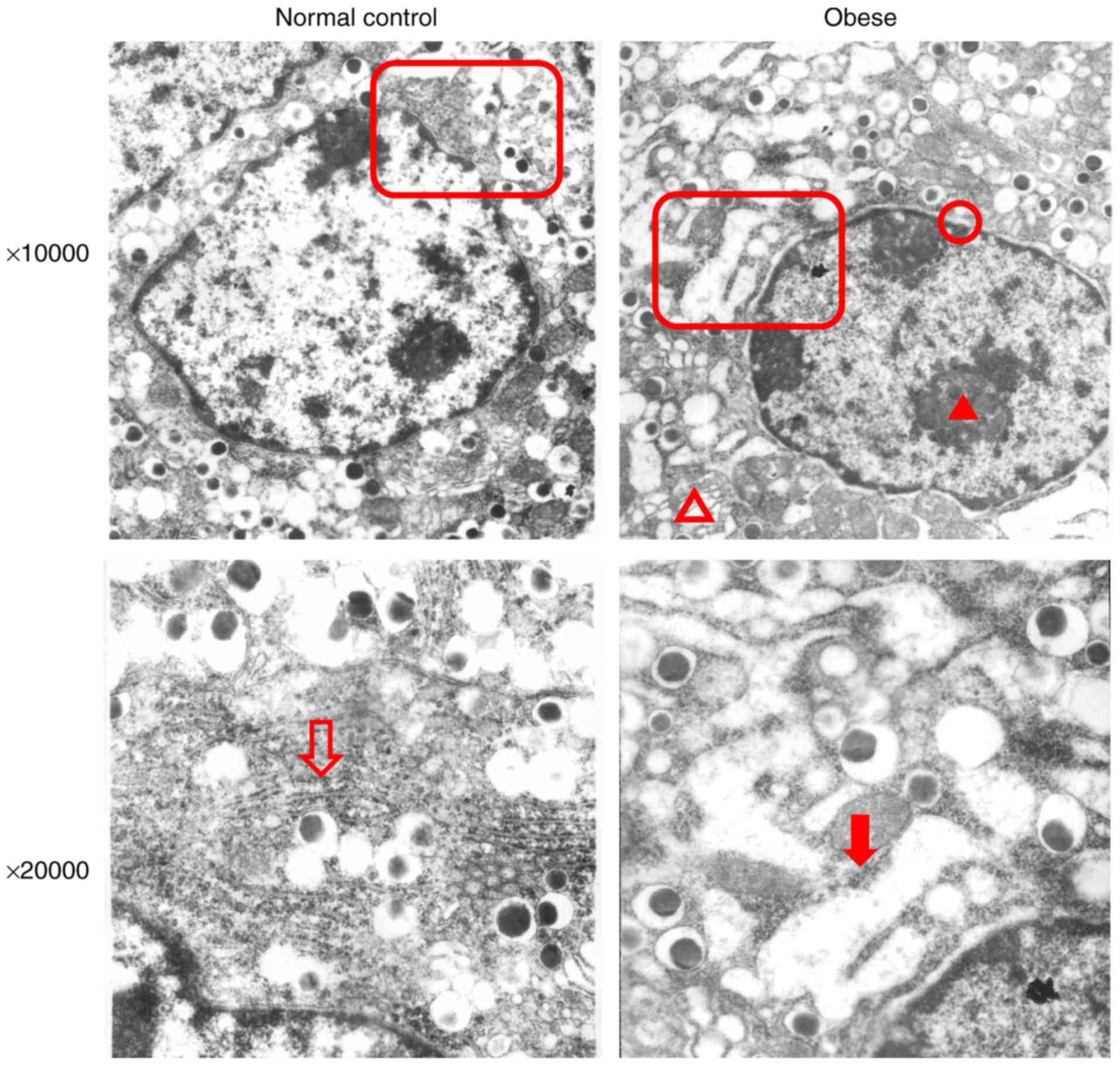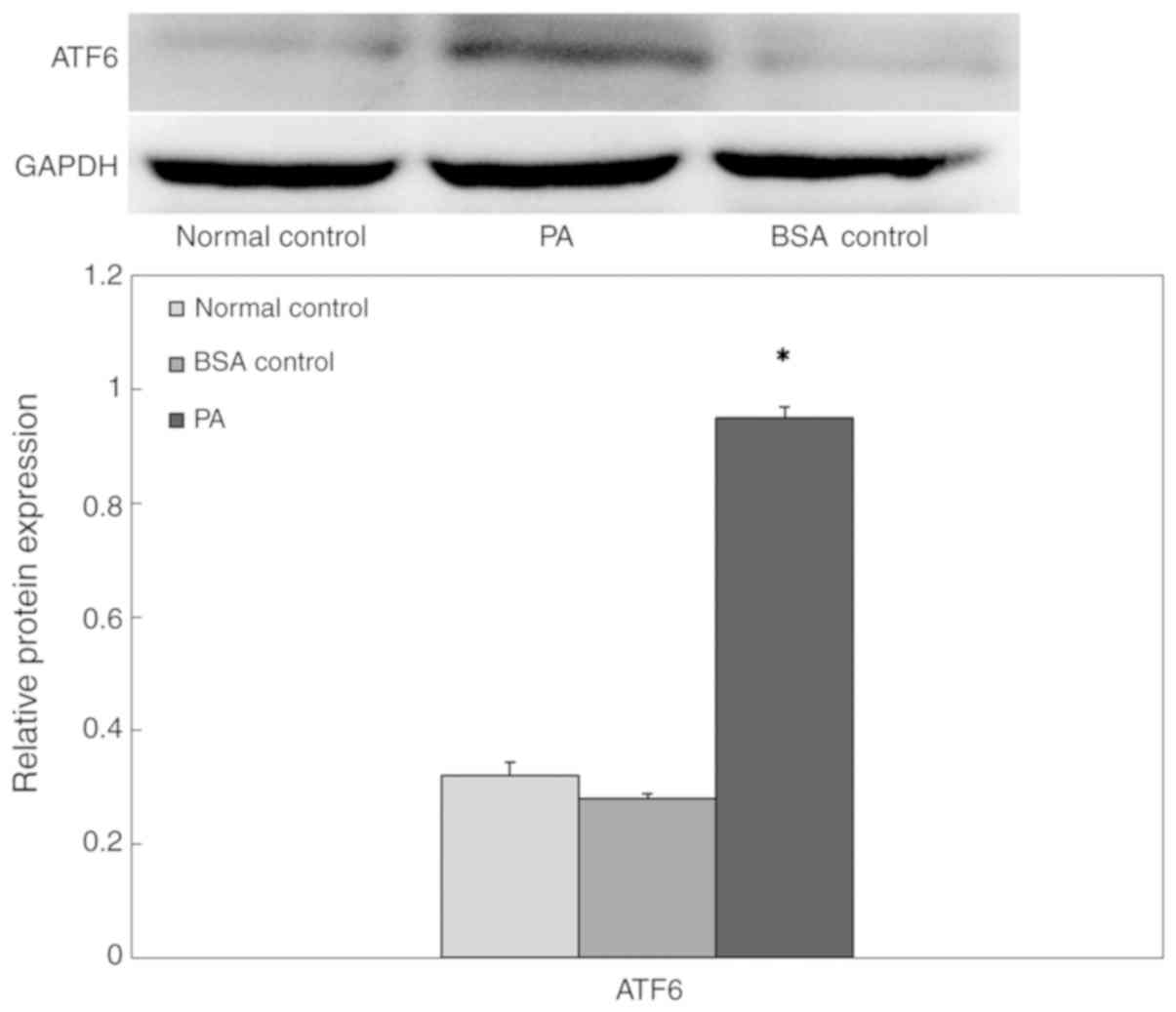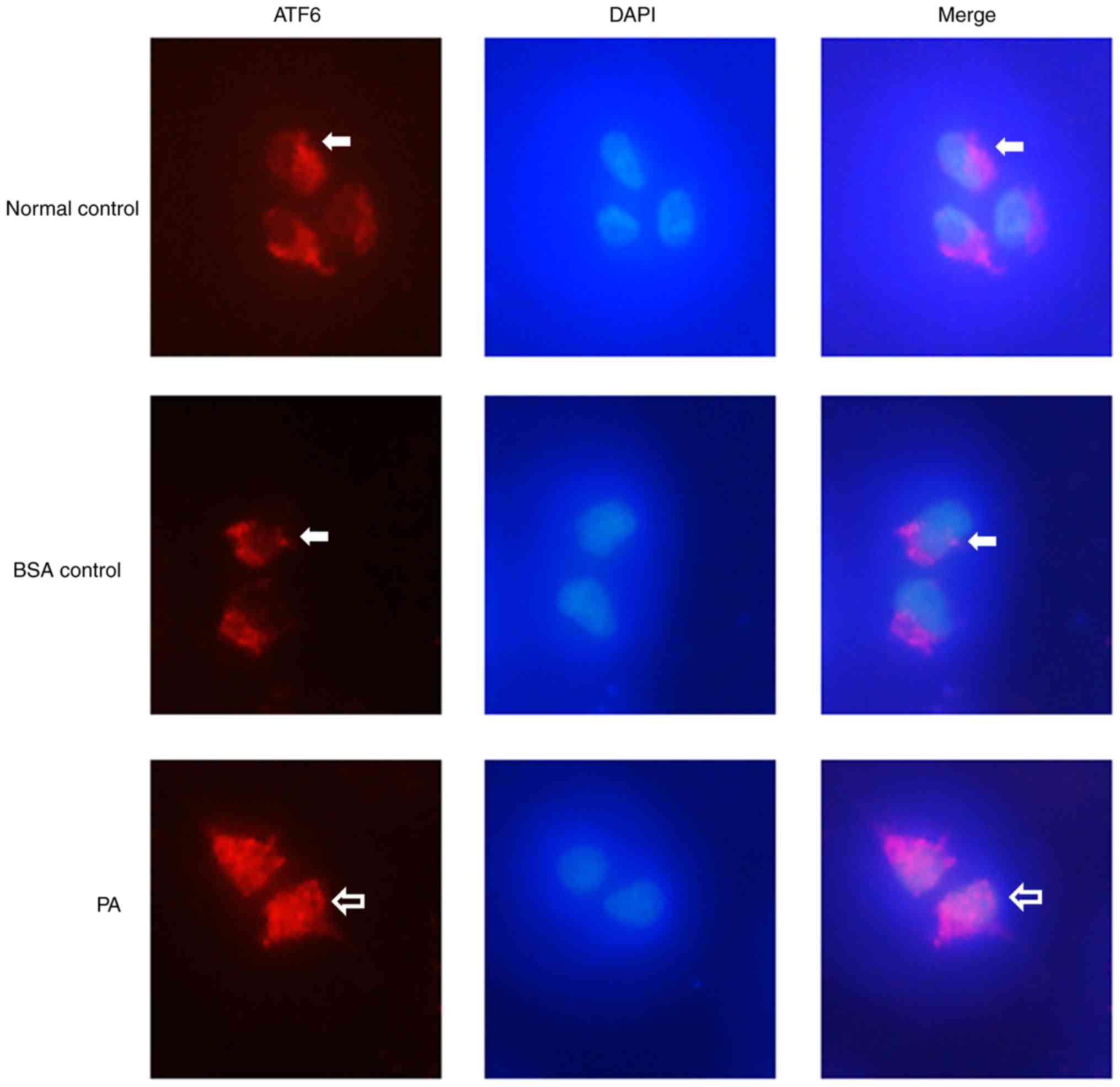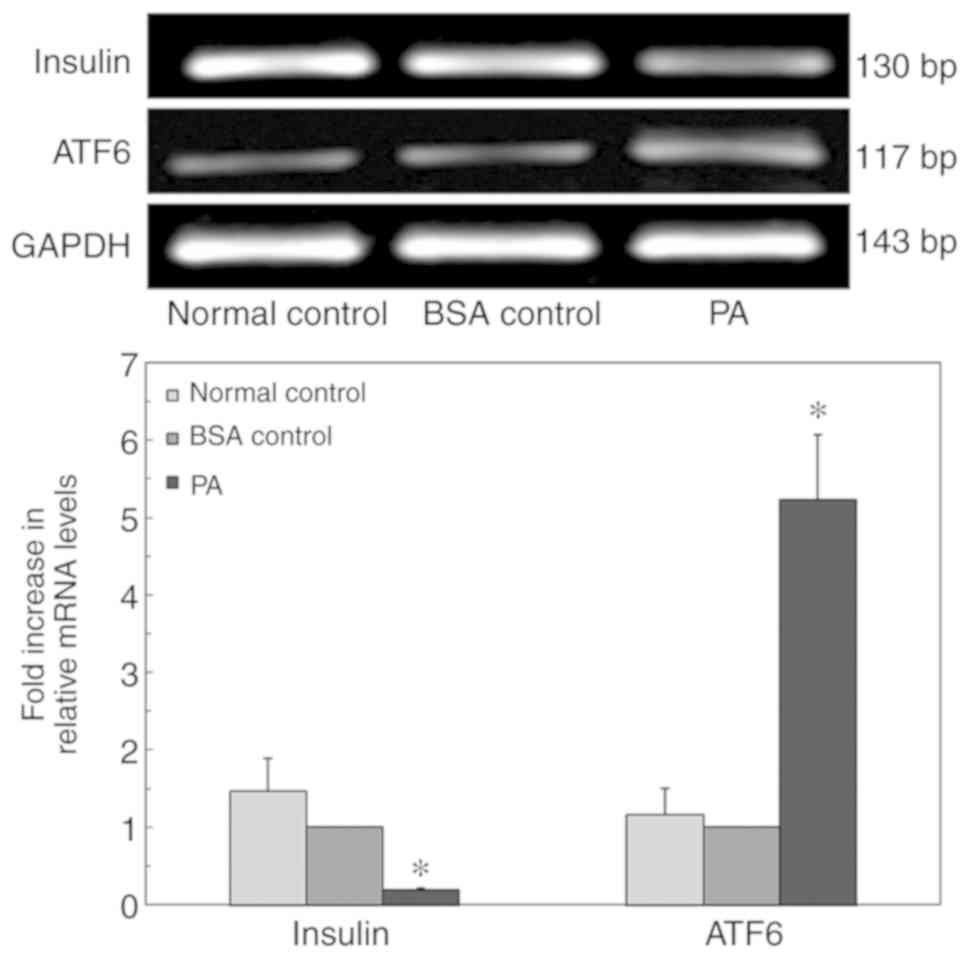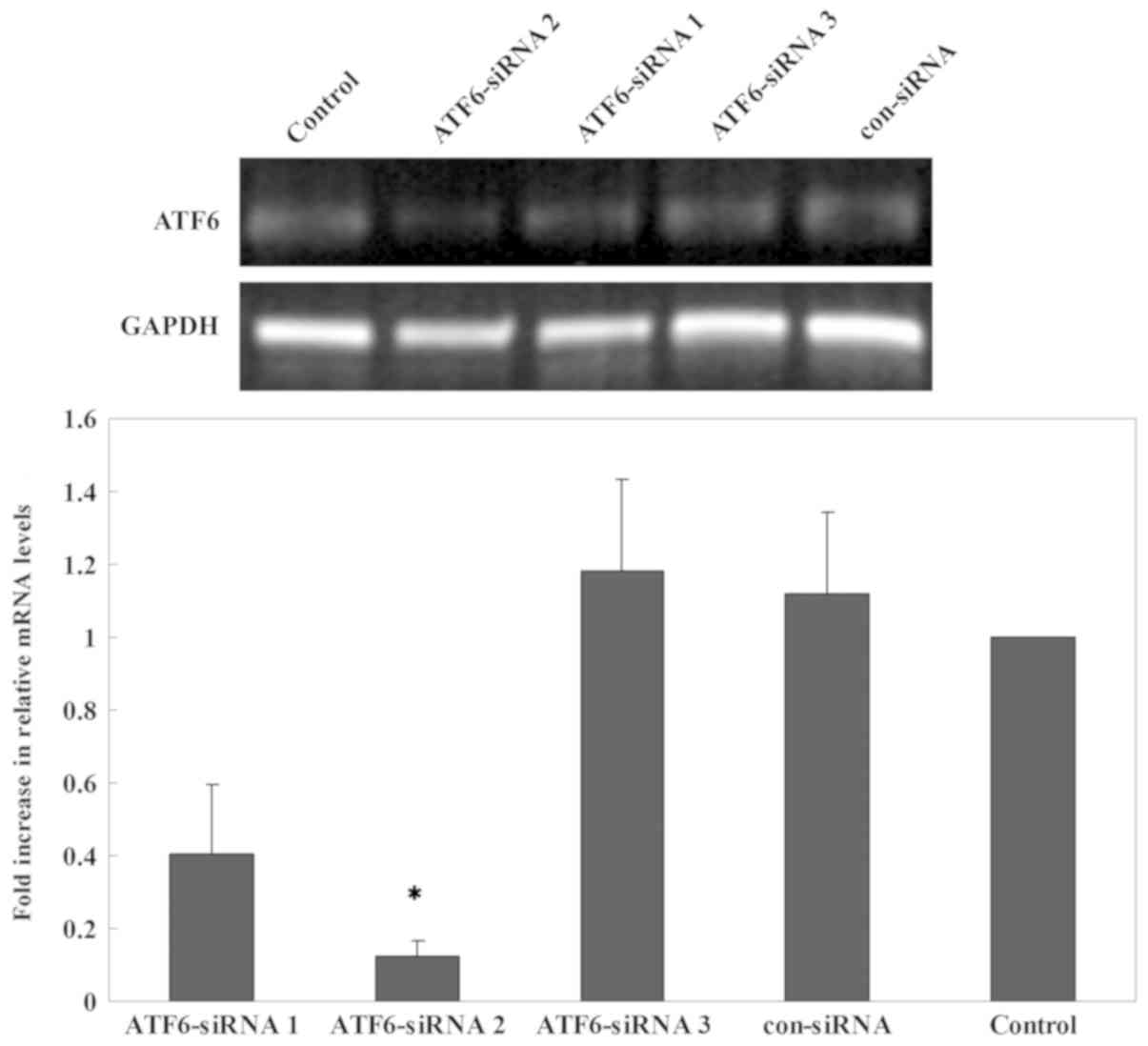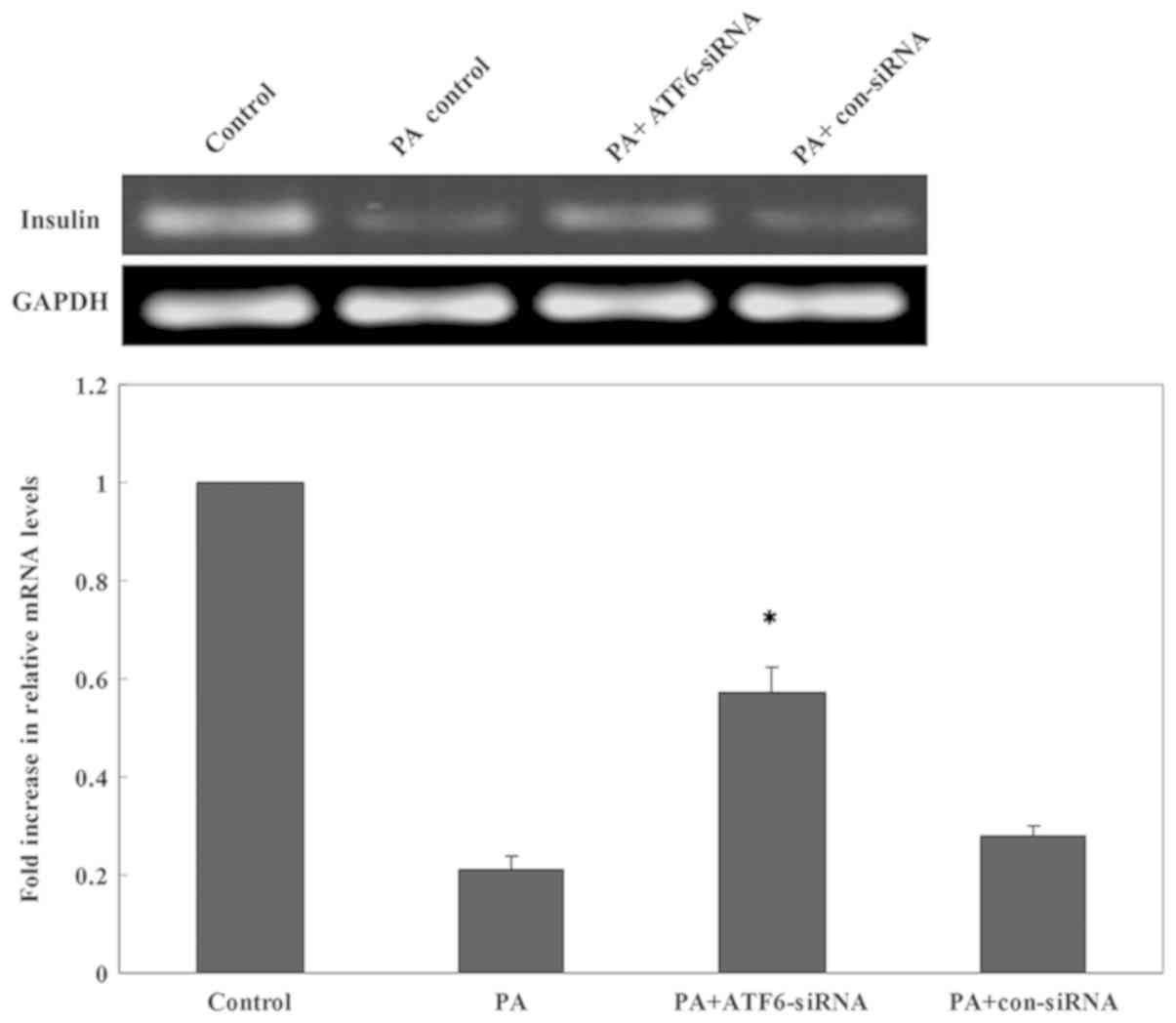|
1
|
Leitner DR, Frühbeck G, Yumuk V, Schindler
K, Micic D, Woodward E and Toplak H: Obesity and type 2 diabetes:
Two diseases with a need for combined treatment strategies - EASO
can lead the way. Obes Facts. 10:483–492. 2017. View Article : Google Scholar : PubMed/NCBI
|
|
2
|
Kahn SE, Cooper ME and Del Prato S:
Pathophysiology and treatment of type 2 diabetes: Perspectives on
the past, present, and future. Lancet. 383:1068–1083. 2014.
View Article : Google Scholar : PubMed/NCBI
|
|
3
|
Prieto D, Contreras C and Sanchez A:
Endothelial dysfunction, obesity and insulin resistance. Curr Vas
Pharmacol. 12:412–426. 2014. View Article : Google Scholar
|
|
4
|
Cnop M, Toivonen S, Igoillo-Esteve M and
Salpea P: Endoplasmic reticulum stress and eIF2α phosphorylation:
The achilles heel of pancreatic β cells. Mol Metab. 6:1024–1039.
2017. View Article : Google Scholar : PubMed/NCBI
|
|
5
|
Sun J, Cui J, He Q, Chen Z, Arvan P and
Liu M: Proinsulin misfolding and endoplasmic reticulum stress
during the development and progression of diabetes. Mol Aspects
Med. 42:105–118. 2015. View Article : Google Scholar : PubMed/NCBI
|
|
6
|
Rabhi N, Salas E, Froguel P and Annicotte
JS: Role of the unfolded protein response in β cell compensation
and failure during diabetes. J Diabetes Res. 2014:7951712014.
View Article : Google Scholar : PubMed/NCBI
|
|
7
|
Hu Y, Gao Y, Zhang M, Deng KY, Singh R,
Tian Q, Gong Y, Pan Z, Liu Q, Boisclair YR and Long Q: Endoplasmic
reticulum-associated degradation (ERAD) has a critical role in
supporting glucose-stimulated insulin secretion in pancreatic
β-cells. Diabetes. 68:733–746. 2019. View Article : Google Scholar : PubMed/NCBI
|
|
8
|
Sovolyova N, Healy S, Samali A and Logue
SE: Stressed to death-mechanisms of ER stress-induced cell death.
Biol Chem. 395:1–13. 2014. View Article : Google Scholar : PubMed/NCBI
|
|
9
|
Yilmaz E: Endoplasmic reticulum stress and
obesity. Adv Exp Med Biol. 960:261–276. 2017. View Article : Google Scholar : PubMed/NCBI
|
|
10
|
Lee J and Ozcan U: Unfolded protein
response signaling and metabolic diseases. J Biol Chem.
289:1203–1211. 2014. View Article : Google Scholar : PubMed/NCBI
|
|
11
|
Tsuchiya Y, Saito M and Kohno K:
Pathogenic mechanism of diabetes development due to dysfunction of
unfolded protein response. Yakugaku Zasshi. 136:817–825. 2016.(In
Japanese). View Article : Google Scholar : PubMed/NCBI
|
|
12
|
Namba T, Ishihara T, Tanaka K, Hoshino T
and Mizushima T: Transcriptional activation of ATF6 by endoplasmic
reticulum stressors. Biochem Biophys Res Commun. 355:543–548. 2007.
View Article : Google Scholar : PubMed/NCBI
|
|
13
|
National Research Council (US) Committee
for the Update of the Guide for the Care and Use of Laboratory
Animals. Guide for the Care and Use of Laboratory Animals.
2011.PubMed/NCBI
|
|
14
|
AVMA Guidelines for the Euthanasia of
Animals: 2013 Edition. https://www.avma.org/kb/policies/documents/euthanasia.pdf
|
|
15
|
Livak KJ and Schmittgen TD: Analysis of
relative gene expression data using real-time quantitative PCR and
the 2(-Delta Delta C(T)) method. Methods. 25:402–408. 2001.
View Article : Google Scholar : PubMed/NCBI
|
|
16
|
Esser N, Legrand-Poels S, Piette J, Scheen
AJ and Paquot N: Inflammation as a link between obesity, metabolic
syndrome and type 2 diabetes. Diab Res Clin Pract. 105:141–150.
2014. View Article : Google Scholar
|
|
17
|
Fonseca SG, Burcin M, Gromada J and Urano
F: Endoplasmic reticulum stress in beta-cells and development of
diabetes. Cur Opin Pharm. 9:763–770. 2009. View Article : Google Scholar
|
|
18
|
Ozcan U, Cao Q, Yilmaz E, Lee AH, Iwakoshi
NN, Ozdelen E, Tuncman G, Görgün C, Glimcher LH and Hotamisligil
GS: Endoplasmic reticulum stress links obesity, insulin action, and
type 2 diabetes. Science. 306:457–461. 2004. View Article : Google Scholar : PubMed/NCBI
|
|
19
|
Zhang K and Kaufman RJ: The unfolded
protein response: A stress signaling pathway critical for health
and disease. Neurology. 66 (2 Suppl 1):S102–S109. 2006. View Article : Google Scholar : PubMed/NCBI
|
|
20
|
Oakes SA and Papa FR: The role of
endoplasmic reticulum stress in human pathology. Annu Rev Pathol.
10:173–194. 2015. View Article : Google Scholar : PubMed/NCBI
|
|
21
|
Gregor MF, Yang L, Fabbrini E, Mohammed
BS, Eagon JC, Hotamisligil GS and Klein S: Endoplasmic reticulum
stress is reduced in tissues of obese subjects after weight loss.
Diabetes. 58:693–700. 2009. View Article : Google Scholar : PubMed/NCBI
|
|
22
|
Hillary RF and FitzGerald U: A lifetime of
stress: ATF6 in development and homeostasis. J Biomed Sci.
25:482018. View Article : Google Scholar : PubMed/NCBI
|
|
23
|
Klop B, Elte JW and Cabezas MC:
Dyslipidemia in obesity: Mechanisms and potential targets.
Nutrients. 5:1218–1240. 2013. View Article : Google Scholar : PubMed/NCBI
|
|
24
|
Engin A: Fat cell and fatty acid turnover
in obesity. Adv Exp Med Biol. 960:135–160. 2017. View Article : Google Scholar : PubMed/NCBI
|
|
25
|
Tinahones FJ, Pareja A, Soriguer FJ,
Gomez-Zumaquero JM, Cardona F and Rojo-Martinez G: Dietary fatty
acids modify insulin secretion of rat pancreatic islet cells in
vitro. J Endocrinol Invest. 25:436–441. 2002. View Article : Google Scholar : PubMed/NCBI
|
|
26
|
Sargsyan E, Artemenko K, Manukyan L,
Bergquist J and Bergsten P: Oleate protects beta-cells from the
toxic effect of palmitate by activating pro-survival pathways of
the ER stress response. Biochim Biophysica Acta. 1861:1151–1160.
2016. View Article : Google Scholar
|
|
27
|
Karaskov E, Scott C, Zhang L, Teodoro T,
Ravazzola M and Volchuk A: Chronic palmitate but not oleate
exposure induces endoplasmic reticulum stress, which may contribute
to INS-1 pancreatic beta-cell apoptosis. Endocrinology.
147:3398–3407. 2006. View Article : Google Scholar : PubMed/NCBI
|
|
28
|
Mayer CM and Belsham DD: Palmitate
attenuates insulin signaling and induces endoplasmic reticulum
stress and apoptosis in hypothalamic neurons: Rescue of resistance
and apoptosis through adenosine 5′ monophosphate-activated protein
kinase activation. Endocrinology. 151:576–585. 2010. View Article : Google Scholar : PubMed/NCBI
|
|
29
|
Hall E, Volkov P, Dayeh T, Bacos K, Rönn
T, Nitert MD and Ling C: Effects of palmitate on genome-wide mRNA
expression and DNA methylation patterns in human pancreatic islets.
BMC Med. 12:1032014. View Article : Google Scholar : PubMed/NCBI
|
|
30
|
Poitout V, Olson LK and Robertson RP:
Insulin-secreting cell lines: Classification, characteristics and
potential applications. Diabetes Metab. 22:7–14. 1996.PubMed/NCBI
|
|
31
|
Assimacopoulos-Jeannet F, Thumelin S,
Roche E, Esser V, McGarry JD and Prentki M: Fatty acids rapidly
induce the carnitine palmitoyltransferase I gene in the pancreatic
b-Cell line INS-1. J Biol Chem. 272:1659–1664. 1997. View Article : Google Scholar : PubMed/NCBI
|
|
32
|
Quinault A, Gausseres B, Bailbe D, Chebbah
N, Portha B, Movassat J and Tourrel-Cuzin C: Disrupted dynamics of
F-actin and insulin granule fusion in INS-1 832/13 beta-cells
exposed to glucotoxicity: Partial restoration by glucagon-like
peptide 1. Biochim Biophys Acta. 1862:1401–1411. 2016. View Article : Google Scholar : PubMed/NCBI
|
|
33
|
Kwon MJ, Chung HS, Yoon CS, Lee EJ, Kim
TK, Lee SH, Ko KS, Rhee BD, Kim MK and Park JH: Low glibenclamide
concentrations affect endoplasmic reticulum stress in INS-1 cells
under glucotoxic or glucolipotoxic conditions. Korean J Intern Med.
28:339–346. 2013. View Article : Google Scholar : PubMed/NCBI
|
|
34
|
Seo HY, Kim YD, Lee KM, Min AK, Kim MK,
Kim HS, Won KC, Park JY, Lee KU, Choi HS, et al: Endoplasmic
reticulum stress-induced activation of activating transcription
factor 6 decreases insulin gene expression via up-regulation of
orphan nuclear receptor small heterodimer partner. Endocrinology.
149:3832–2841. 2008. View Article : Google Scholar : PubMed/NCBI
|
|
35
|
Walter P and Ron D: The unfolded protein
response: From stress pathway to homeostatic regulation. Science.
334:1081–1086. 2011. View Article : Google Scholar : PubMed/NCBI
|
|
36
|
Sano R and Reed JC: ER stress-induced cell
death mechanisms. Biochim Biophys Acta. 1833:3460–3470. 2013.
View Article : Google Scholar : PubMed/NCBI
|
|
37
|
Hong SW, Lee J, Cho JH, Kwon H, Park SE,
Rhee EJ, Park CY, Oh KW, Park SW and Lee WY: Pioglitazone
attenuates palmitate-induced inflammation and endoplasmic reticulum
stress in pancreatic β-Cells. Endocrinol Metab (Seoul). 33:105–113.
2018. View Article : Google Scholar : PubMed/NCBI
|
















